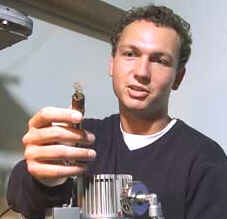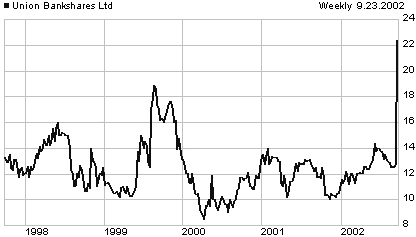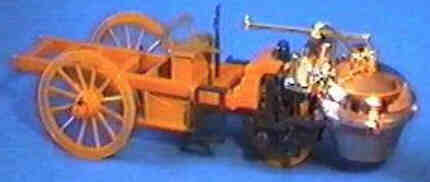Deaths which occurred on
a 25 September: ^top^
2002 Seven persons shot in the head after being tied up in chairs,
by two gunmen, in the Karachi, Pakistan, offices of the Idare-e Amn-O-Insaf
(Peace and Justice) Institute, a Christian charity. An eighth person
is critically wounded.
2002 The last to die in an attack on the Akshardham Hindu temple
in Gandhinagar, India, which ends at 07:10 and started at 16:55 on 24
September where it is reported fully.
2002 12 passengers, including two children, burned in 01:00 fire
of an Andhra Pradesh Road Transport Corporation luxury bus in Mahabubnagar
district near Itikyala village, about 35 km from Kurnool, India, on national
highway 7. The bus proceeding from Hyderabad to Rayachoti in the faction-ridden
Cuddapah district, with 35 passengers, was engulfed in fire when a passenger
in the last row of the bus poured gasoline and lit it. Most of the passengers
were fast asleep. 8 passengers died on the spot, 4 others died at Kurnool
government hospital. 19 survivors are injured, a few with burns on up
to 90% of their bodies.
2001 Naïma, 23 ans, et Nacéra, 10 ans, deux soeurs, en Algérie
dans leur tente dans un centre de regroupement de nomades, situé à quelques
kilomètres de la daïra de Mechraâ-Sfa, tout près de la ferme-pilote
Hattabi-Mokhtar, juste avant minuit par quatre individus armés de kalachnikovs.
Avant de battre en retraite, pour se retrancher dans les denses maquis
environnants de Mechraâ-Sfa, les assaillants se sont emparés de 260 millions
de centimes et d'un fusil de chasse.
2001 Rabah Belhafaf, 50 ans environ, par des coups de feu de terroristes
qui l'atteignent à la tête et à la poitrine vers 20h, au douar de Lansa
dans la commune de Keddara, à 30 km au sud-ouest de Boumerdès, Algérie.
Belhafaf était un Patriote, qui avait pris les armes en 1994 contre
les hordes islamistes.
2000 Heberto Padilla, poeta cubano.
1993 Bruno Pontecorvo, físico italiano.
1992 César Manrique, arquitecto y artista español.
1991 Klaus Barbie, 77, in prison in Lyon, Nazi war criminal “the
butcher of Lyon”.
1988 Billy Carter, 51, US President Carter's embarassing brother
Billy, of cancer
1983 Leopoldo III, rey de Bélgica.
1982: 13 people including 5 children of Penn prison guard George Banks,
all killed by him.
1978: 144 personas al chocar en el aire dos aviones de pasajeros
en San Diego (California). — 144 persons are killed when a Pacific
Southwest Airlines Boeing 727 and a private plane collided over San Diego.
1974 William Sloane publisher/writer ("The Edge of Running Water")
1969 During the Vietnam War: Two terrorist attacks occur
near Da Nang in which 19 South Vietnamese die. Viet Cong commandos
threw a grenade into a meeting place, killing four civilians and one
policeman and wounding 26 others. At nearly the same time, a bus struck
a mine 150 km southeast of Da Nang killing 14 civilians..
1960 Emily Post, 86, etiquette expert
1959 S.W.R.D. Bandaranaike Ceylon's PM, assassinated by a Buddhist
monk
1959 Augie Carfano,
mafioso murdered on orders of rival Meyer Lansky
^top^
Mob assassins shoot "Little"
Augie Carfano to death in New York City on Meyer Lansky's orders.
Lansky, one of the few organized crime figures who managed to
survive at the top for several decades, was estimated to have
accumulated as much as $300'000'000 in ill-gotten gains by the
1970s. Still, the government was never able to prove any wrongdoing.
Meyer Lansky, the son of Russian immigrants, had an eighth-grade
education, which put him far ahead of many other criminals.
According to legend, Lansky was
a straight arrow until one day in October 1918, when he joined
a fight between teenagers Bugsy Siegel and Lucky Luciano over
a prostitute. After the three were charged with disorderly conduct,
Lansky and Siegel became friends and began running a high-stakes
craps game. The two later expanded into bootlegging, car theft,
and extortion, and helped form the New York "syndicate.” Lansky,
a ruthless leader who would not tolerate disloyalty, ordered
the murder of a thief who failed to provide an adequate kickback.
Although he was shot several times, the thief survived to name
Lansky as one of the assailants. Lansky then poisoned his hospital
food, and though he survived a second time, the threat was enough
to change his attitude toward testifying. Later, he even rejoined
Lansky's gang.
In June 1947, Lansky ordered
the death of his old friend Bugsy Siegel in Beverly Hills, California.
Siegel, who had been sent to the West Coast in order to establish
a new mob presence, came up with the idea of building The Flamingo,
Las Vegas' first major casino. Although built with mob money,
Siegel refused to pay back the loan. When Lansky ordered the
murder of Augie Carfano 12 years later, Carfano had been intruding
on Lansky's gambling interests in Florida and Cuba. His death
eliminated all competition and opened up emerging markets for
Lansky in South America. During the 1960s and 1970s, Lansky
made a special effort to stay out of the public eye and was
fairly successful. He died in 1983. |
1949 Henri-Charles Manguin, French Fauvist painter born on 23
March 1874. — LINKS
— Walk
in St. Tropez (1905) — Fleurs
(1915) — Paysage
à St. Tropez (1905) — Matin
à Cavaliere (1906)
1942: 4 people killed in failed
bombing raid on Norway Gestapo
^top^
During a Nazi Party rally in
Oslo, British aircraft, aiming to destroy the records of the
Norwegian Resistance (kept in Gestapo headquarters, but not
as yet acted upon), bombed the building. The bombs missed their
target, but surrounding buildings were hit, and four people
were killed. The Nazi rally was dispersed..
Germany invaded Norway in April
1940, in a stunning blitzkrieg campaign, a response to Britain's
laying of mines in Norwegian waters—which was itself a response
to Norway's iron-ore trade with the Axis power. But in one short
month, the British and French troops that had landed in Norway
to aid in its defense were chased out, as well as Norway's royal
family, who set up a government-in-exile in London.
The Germans established a Reich
commissioner to rule the occupied territory. The commissioner
outlawed all political parties but one—the pro-Nazi National
Unity Party. It was led by Vidkun Quisling, the former Norwegian
minister of war. His name would become synonymous with treason
and collaboration. Quisling, now a German puppet, ruled as a
Nazi overlord who would brook no dissent, even sending thousands
of his own countrymen to German concentration camps. A majority
of Norwegians despised both Quisling and his German masters.
Teachers and clergy resigned their positions in the state-sponsored
church in order not to be implicated in the new fascist regime.
One means of keeping defiant locals of newly occupied countries
under control was to have Gestapo try to terrorize them. |
1911 Daniel Aldana, militar y político colombiano.
1908 Henry A. Redpath,
60, English Old Testament textual scholar From 1892-1906, Redpath and
Edwin Hatch compiled "A Concordance to the Septuagint and Other Greek
Versions of the Old Testament" — still in print today!
1867 Oliver Loving
of gangrene in wound from Comanches, cattle drive pioneer.
^top^
Pioneering cattleman Oliver Loving
dies from gangrene poisoning in Fort Sumner, New Mexico. A few
weeks before, Loving had been trapped by 500 Commanche braves
along the Pecos River. Shot in the arm and side, Loving managed
to escape and reach Fort Sumner. Though the wounds alone were
not fatal, Loving soon developed gangrene in his arm, a common
infection in the days before antibiotics. Even then he might
still have been saved had his arm been removed, but unfortunately
the fort doctor "had never amputated any limbs and did not want
to undertake such work.”
Sometimes referred to as the
"Dean of the Trail Drivers," Loving had been braving the Commanche
territory along the Pecos in order to make his second pioneering
drive of cattle from Texas to Denver. In the 1860s, the Texas
cattle herds were booming, but as long as the cattle were in
Texas they were essentially worthless. To make money, they had
to be moved over thousands of miles to the big cities where
Americans were becoming increasingly fond of good fresh western
beef. To overcome this challenge, a number of Texans pioneered
the technique known as the "long drive," hiring cowboys to take
massive cattle herds overland to the first cattle towns like
Wichita and Dodge City where they could be loaded on trains
for the East.
Along with his partner Charles
Goodnight, Oliver Loving tried a brilliant alternative approach.
Goodnight and Loving proposed to drive a herd of cattle directly
to the growing population centers in New Mexico and Colorado
where they could avoid middlemen and earn higher prices per
head. The result was the Goodnight-Loving Trail, a 700-mile
route through west Texas and New Mexico that eventually brought
the cattle right into the booming mining regions of Colorado.
During the course of their first
long and often treacherous drive in 1866, Loving and Goodnight
lost more than 400 head, mainly to dehydration and drowning.
But the 1600 cattle that survived the trip brought good prices,
and when Goodnight headed back to Texas his mule carried $12'000
in gold. Encouraged, the two men were preparing to follow the
same route the next year when Loving's fatal encounter with
the Commanche abruptly ended the partnership. However, Goodnight
and others continued to use the Goodnight-Loving Trail, and
it soon became one of the most successful cattle trails of the
day. |
1727 Sarah Kemble Knight, US widowed teacher (of Ben Franklin
and Samuel Mather, among others, it is claimed but not proven) and businesswoman
(in later life she ran an inn near New London, Connecticut) born on 19
April 1666. Her The Journal of Madam Knight or Private Journal
of a Journey from Boston to New York in the Year 1704 (published
posthumously in 1825), a vivid and often humorous diary of her unchaperoned
journey on horseback from Boston to New York in 1704, is one of the most
authentic texts on 18th-century life in the British colonies in America.
1690 Peter van Lint, Flemish painter born on 28 June 1609.
1679 Philips-Ausgustyn Immenraet, Flemish painter born on 21 February
1627. — The
Wolf Hunt,
1617 Francisco Suárez, teólogo español.
1561 Alonso Berruguete, escultor y pintor manerista español nacido
en 1486.. .— MORE ON BERRUGUETE AT ART “4” SEPTEMBER
— LINKS
— Salomé
1534 Clement VII. Unpopular Pope, he could not get bankers to
lend to him, was unable to stem the Lutheran advance or to implement
reforms in his own church. His indecisiveness led Henry VIII of England
to break from Rome over the dissolution of his marriage to Catherine
of Aragon.
1506 Felipe I El Hermoso, Rey de Castilla.
|
 On
a 25 September:
On
a 25 September:  2002
KeyCorp, the 11th-largest US bank, offers to buy Union Bankshares Ltd.
(UBSC) for about $66 million in cash, options expenses and other costs,
amounting to $22.63 a share of UBSC. On the NASDQ, UBSC rises from its
previous close of $13.75 to an intraday high of $22.50 and closes at
$22.36. Its previous high had been $19.00 on 23 August 1999 and it had
traded as low as $9.05 as recently as 28 November 2001. [< 5~year
price chart] Union Bankshares is a bank holding company for Union
Bank and Trust, a state-chartered bank with six offices in the Denver
metropolitan area. The acquisition is the first for KeyCorp (KEY) since
1995, when it bought OmniBank, another Colorado-based bank holding company.
On the New York Stock Exchange, KEY edges up from its previous close
of $23.93 to close at $24.76.
2002
KeyCorp, the 11th-largest US bank, offers to buy Union Bankshares Ltd.
(UBSC) for about $66 million in cash, options expenses and other costs,
amounting to $22.63 a share of UBSC. On the NASDQ, UBSC rises from its
previous close of $13.75 to an intraday high of $22.50 and closes at
$22.36. Its previous high had been $19.00 on 23 August 1999 and it had
traded as low as $9.05 as recently as 28 November 2001. [< 5~year
price chart] Union Bankshares is a bank holding company for Union
Bank and Trust, a state-chartered bank with six offices in the Denver
metropolitan area. The acquisition is the first for KeyCorp (KEY) since
1995, when it bought OmniBank, another Colorado-based bank holding company.
On the New York Stock Exchange, KEY edges up from its previous close
of $23.93 to close at $24.76. Le fardier à vapeur du Français Cugnot, essayé à Vincennes à
la fin de 1770, est considéré comme le premier véhicule automobile
— automobile signifiant "se mouvant par soi-même". Mais
cela n'a pas eu de suites.
Le fardier à vapeur du Français Cugnot, essayé à Vincennes à
la fin de 1770, est considéré comme le premier véhicule automobile
— automobile signifiant "se mouvant par soi-même". Mais
cela n'a pas eu de suites.